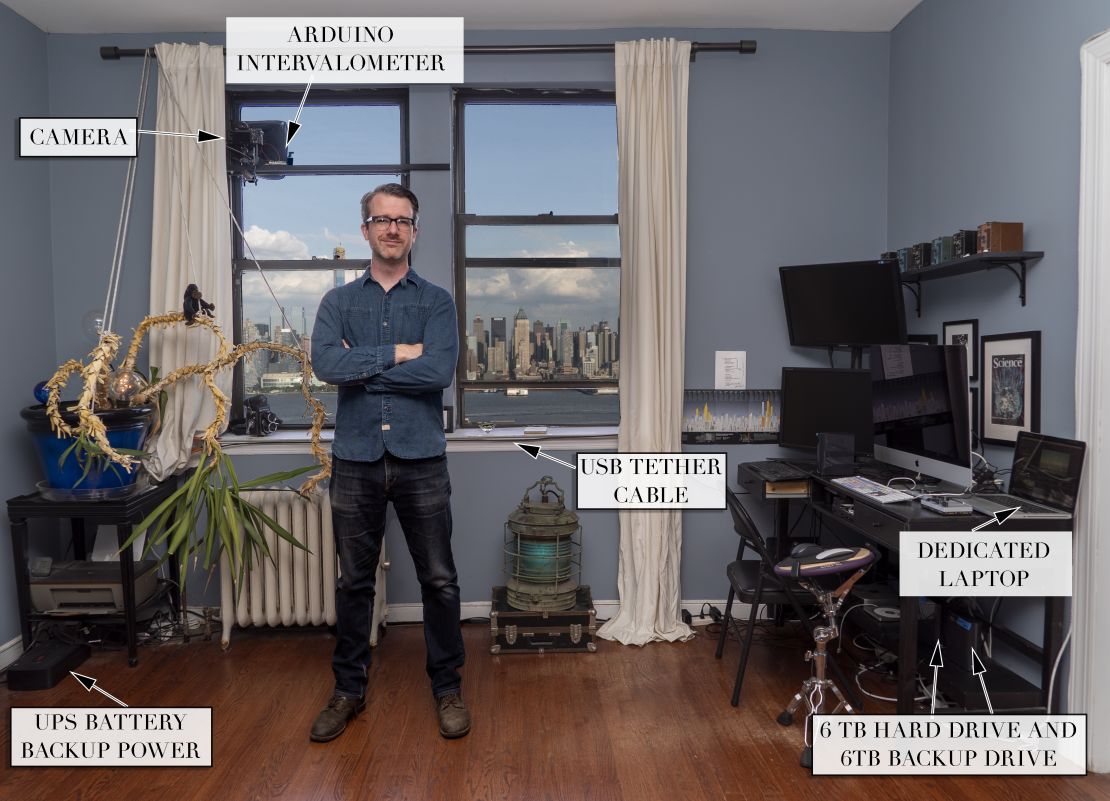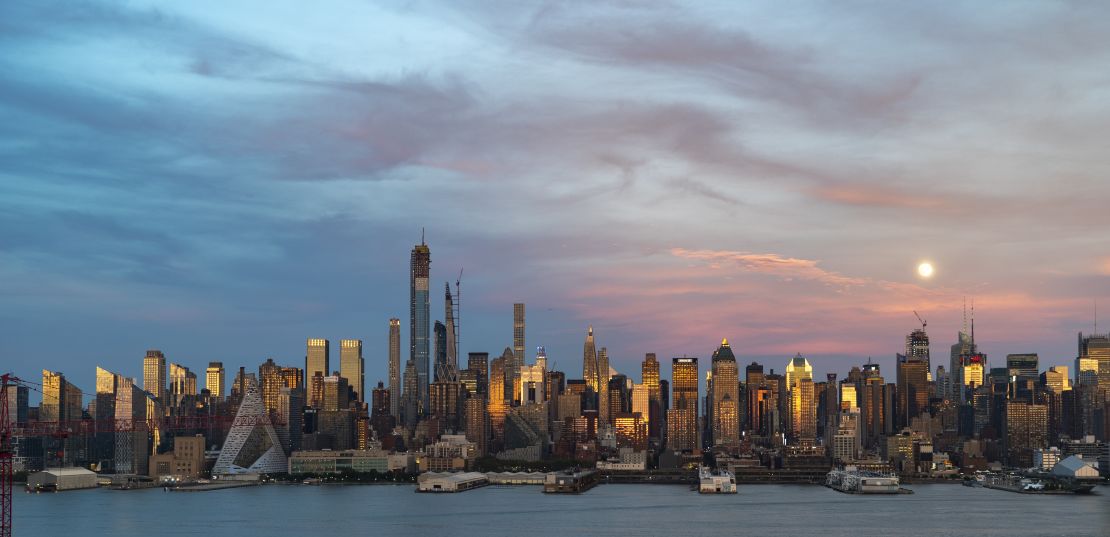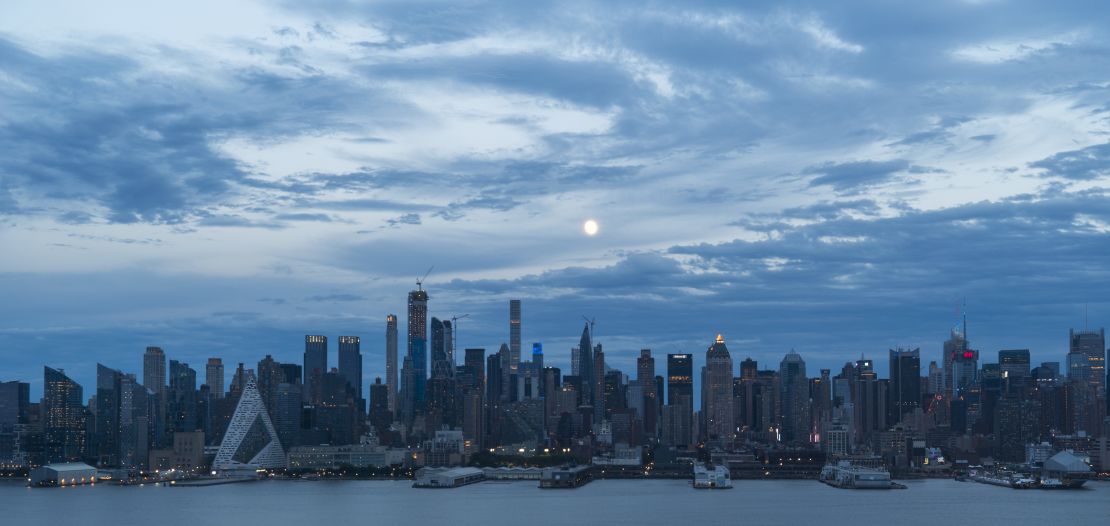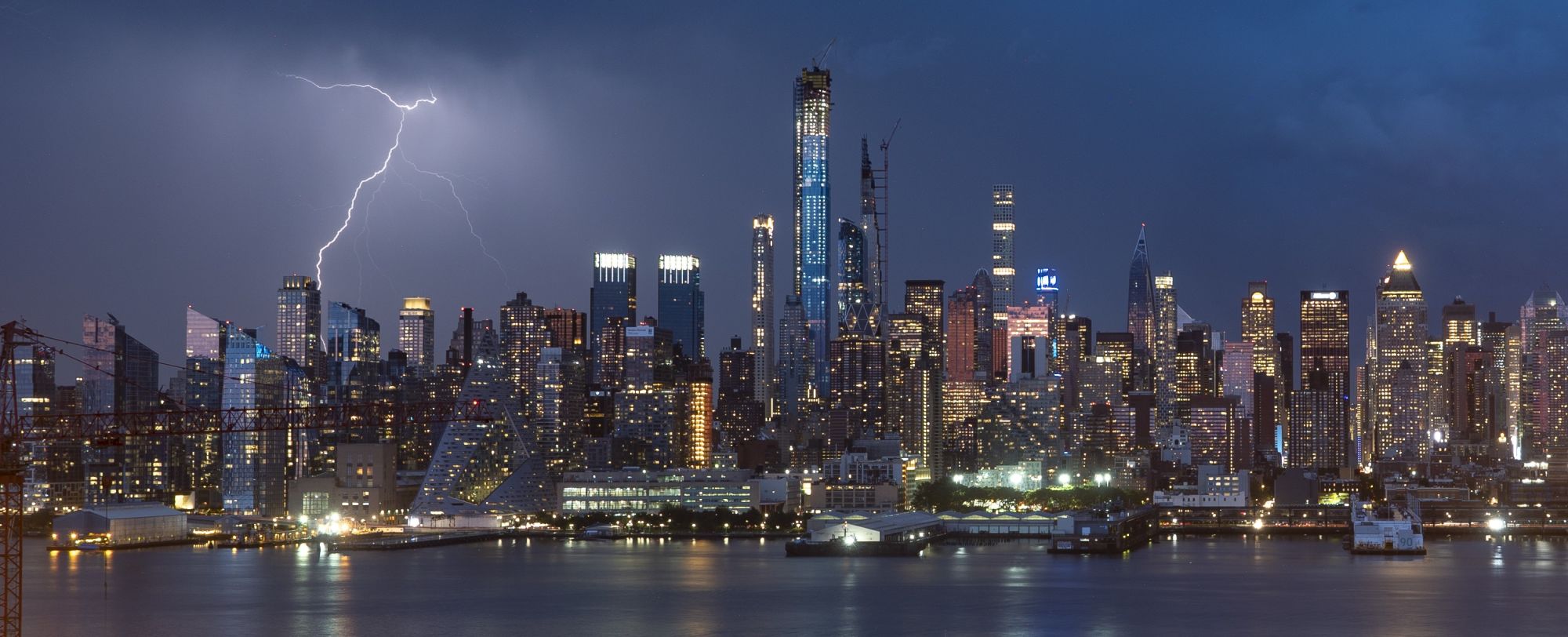When Joseph DiGiovanna was looking for an apartment to buy in Weehawken, New Jersey, the most important thing for him was the view.
Perched on the Palisades, the steep cliffs overlooking the Hudson River, Weehawken is known for its striking views of New York. “I moved to this town about 10 years ago,” he said in a phone interview.
“I lived on a side street and I patiently waited three years to find the perfect apartment with the perfect view. And when it went on the market, fortunately it was affordable and I bought it immediately.”
Since then, DiGiovanna has been capturing that perfect view of Manhattan – from the George Washington Bridge to the Verrazzano Bridge – and has turned it into his life project: A 30-year timelapse of New York’s skyline.
After a period of trial and error to find the ideal kit and configuration, he’s set up a rig on his window that takes a photograph every 30 seconds. That’s been going on for just over four years, which means he has already amassed more than 4,200,000 images – and counting.
No moving parts
DiGiovanna’s rig takes 2,880 images each day, producing 36 gigabytes of data (equal to a 3-hour download at average broadband speeds).
The camera is mounted on a shelf and controlled by an Arudino, a tiny programmable microcomputer. Once taken, the photographs are transferred via a cable to a laptop running timelapse software.
The data is then stored, at the end of each day, on two separate hard drives. It accumulates so fast that the drives have to be changed four times a year. In case of a power failure, an uninterruptible power supply can keep everything running for several hours.
“It runs itself, which is the beauty of it. I built the shelf out of steel, and it’s mounted up there happily in the top part of the window. When people come over, they don’t even notice it – I have to point to it and be like, ‘There’s the camera I’ve been telling you about.’”

The photographer settled on this configuration after multiple trials, which included cheaper cameras. “I just gave up on trying to make it affordable. Eventually I just took a deep breath and I switched to my current system, which is very expensive, about $15,000 if you add up every item.”
The camera, made by Sony, was chosen because it has no moving parts, reducing the odds it could break. Cameras with a moving shutter, DiGiovanna says, are only guaranteed to work for about 250,000 shots. He hasn’t had to replace this one – yet.
“My original thought was, I’m going to get a grant and buy 15 of these, so that I could just switch them out when they fail, or preemptively. But at this point, the camera that’s in the window right now has been there for five years and it’s perfectly happy. I have another one ready: If it should fail, I can switch it right in. But I would love if I could just keep this one,” he said.

No cloud?
DiGiovanna has suffered only minor disruptions so far, mostly as a result of the computer freezing up, but for a 30-year project, even skipping half a day won’t matter much. Keeping the data safe, however, is a different problem.
After his story was featured in a popular YouTube video, DiGiovanna received numerous comments from concerned viewers about his backup strategy, most notably his reliance on physical drives rather than the cloud. “My very rudimentary safety protocol is that the backup drives are not in my apartment. They’re stored at my mom’s house in another state. So that would protect me from a fire or water damage.”
He says cloud backup services for the amount of storage he needs were too expensive. But that might be about to change. “I think we’re at the point where the cloud might be an affordable solution,” he said.
And what happens if he decides to move? “That’s usually everyone’s first question and it’s obviously a possibility, but since I own the apartment, I would just set up an agreement with the renter, saying that the camera’s going to live there. The physical presence of the camera, computer and backup system is remarkably small.”
Looking to 2045
DiGiovanna releases two timelapse videos each day – capturing sunrise and sunset – via Instagram and through a website where visitors can go back and look at the images from any specific date from the past four years.
Some days are more eventful than others. On July 13, 2019, when New York experienced a large blackout that left 73,000 without power, DiGiovanna’s rig captured it perfectly. “As the sun went down, most of the city wasn’t illuminated. So I grabbed my camera and ran outside, but I quickly realized it was almost impossible to get an interesting photograph. When I came back in, I was delighted to find that the timelapse captured it better than anything. You could not have planned better video coverage of the blackout. Even the framing is perfect,” he said.
In the four years since he started, the city’s skyline has already changed dramatically, with over a dozen new buildings under construction or completed. But the spirit of the project does not necessarily rely on what is visible in the videos.
DiGiovanna hopes that people can look up days that are meaningful for them, and share their story with others. “It’s a living calendar that anyone can be a part of,” he said. For that reason, he’s dedicated the project to his late father, who loved watching sunsets from his apartment.
What will happen in July 2045, when it all comes to an end? “I think we could do something really exciting at that point. I would love to be in a museum. That would be a dream come true. As the data increases, the things that I can do with it increase, and right now I have a million ideas in my head that I can’t quite bring to fruition because I need a little bit more technology for that.”

If it comes to an end, that is. DiGiovanna hopes it might not. “This might sound silly, but I’ve always wanted it to go forever. I thought that 30 years was a good place to start, it gets people’s attention, but I’ve always seen the project as larger than this one camera and larger than 30 years.
“I definitely want another camera in Brooklyn and I would love to expand all over the world. I’d love to have a camera in Paris, in London, and just anywhere that people can relate to.”

